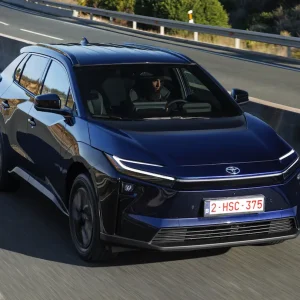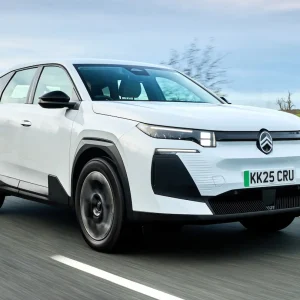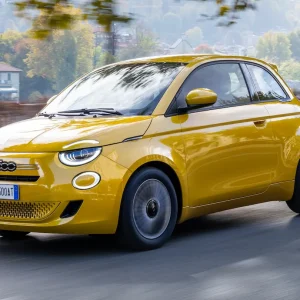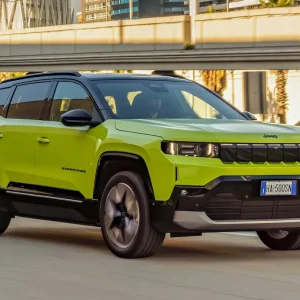Mitsubishi believes it has a hit on its hands with the new plug-in Outlander SUV.
After the £5000 Government grant for ultra low-emission vehicles, the entry GX3h model costs exactly the same as the equivalent diesel, with Mitsubishi intending on scoping out customers to determine whether a plug-in petrol model works better for their driving profile than a diesel.
The Outlander Plug-in Hybrid Electric Vehicle (PHEV) combines a 2.0-litre petrol engine with an electric motor capable of around 32 miles of zero-emission travel before switching over to conventional power, in the same way as Volvo’s Plug-in Hybrid V60 operates in eliminating range anxiety. The Outlander is all-wheel drive, with independent motors driving the front and rear wheels.
The official test figures of 44g/km and 148mpg are irrelevant because each driver’s individual usage pattern will be different, but Mitsubishi’s in-house calculations reckon anything around 100 miles between recharges will see a PHEV driver better off than if they were in a diesel, before the benefit ebbs away.
Mitsubishi is claiming no compromises for the Outlander PHEV versus the standard model, as it was originally designed with the knowledge that a plug-in version was part of the plan. The batteries sit under the seats, adding 200kg of weight but lowering the centre of gravity to help handling, although it’s still a tall, heavy vehicle and not the most nimble. Mitsubishi claims no change to the seat height, but the driving position feels taller than in the regular diesel, while the boot is just 3% smaller at 463 litres.
There’s also no seven-seat option with the PHEV because the battery pack is located where the third row of seats would be.
The interior gets a different gear lever, the rev counter is replaced by an energy meter and the touch-screen infotainment system gives various information about driving modes, range and efficiency, but there isn’t the at-a-glance simplicity of the Vauxhall Ampera’s system, which instantly offers the most pertinent information in a cleaner way. The paddleshifts on the steering column that would traditionally change gear in an automatic in this case allow the driver to flick between five different levels of energy regeneration, offering various resistance when the driver lifts off the accelerator.
To drive, the Outlander is fundamentally just an ordinary SUV. It’s a large, comfortable and practical off-roader and, without looking at the screens, at times it’s impossible to tell which powertrain is operating. It’s clear under acceleration, but refinement at a cruise is good.
Mitsubishi feels it’s onto a real winner with this model, and is setting almost limitless volume aspirations. While full whole-life costs are still to be confirmed, there’s nothing to suggest that the Outlander should be anything other than a sensible and pioneering fleet choice.
| P11D price | £37,899 | |
| Model price range | £23,699-£39,999* | |
| Fuel consumption | 148.0mpg | |
| CO2 (tax) | 44g/km (5%) | |
| BIK 20/40% per month | £32/£63 | |
| Service interval | 12,500 mls | |
| Insurance (1-50) | group 27 | |
| Warranty | 3yrs/unlimted miles | |
| plus 5yrs/100,000mls on battery | ||
| Boot space (min/max) | 463 litres | |
| Engine size/power | 1998cc/120hp petrol | |
| plus 80hp electric | ||
| Top speed/0-60mph | 106mph/11.0secs | |
| On sale | May 2014 | |





